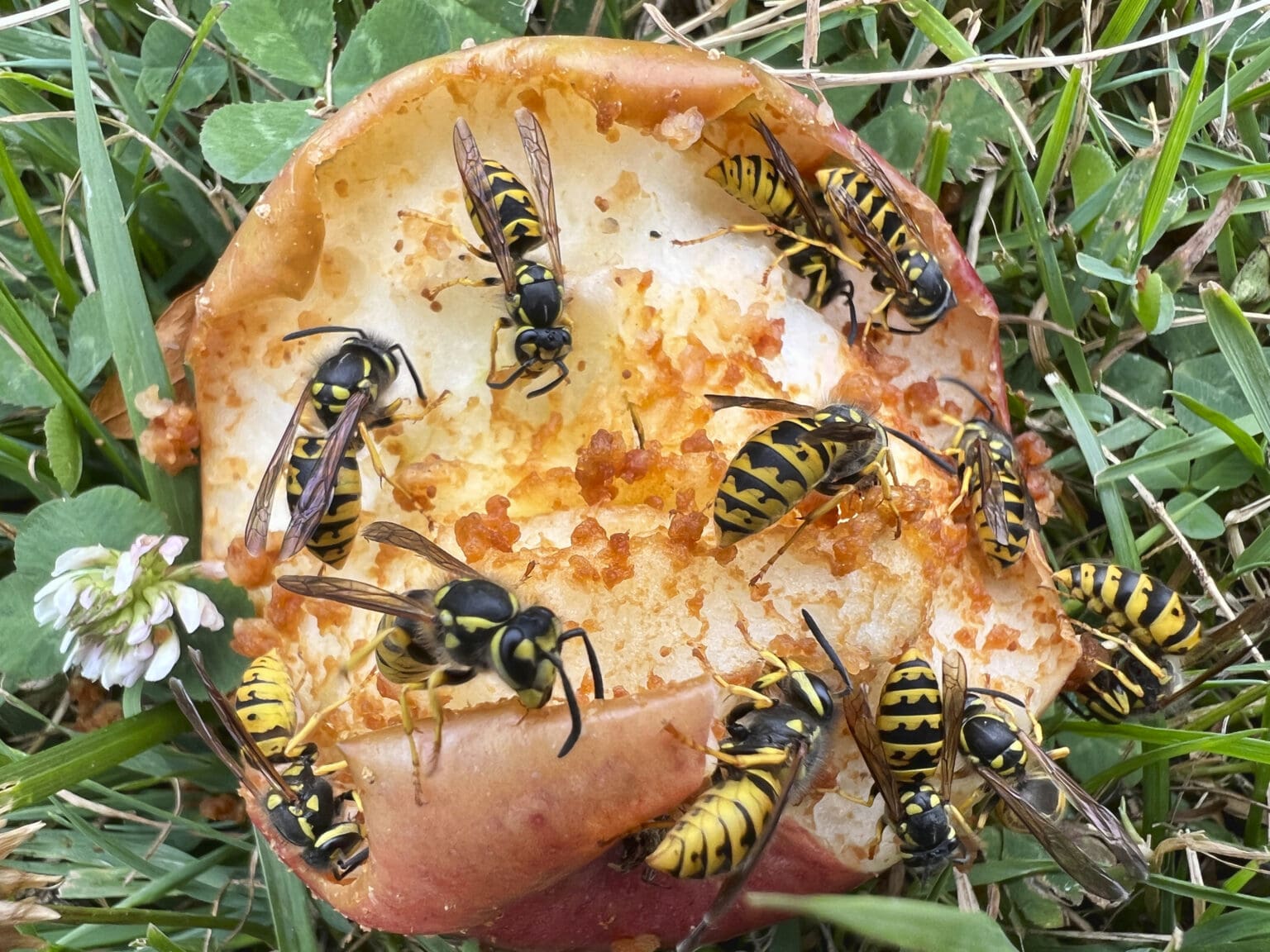I love autumn, no matter what my fellow recreationists might say about bidding summer adieu.
As soon as the barometric pressure drops, I can’t wait for Larch Madness along state Route 20. Or the bone-white full harvest moon, arriving in local neighborhoods on Sept. 29.
The bustle of summer erodes as the days grow shorter and Trader Joe’s stuffs its shelves with more pumpkin products than a gourd patch. Exactly who is crowding the aisles looking for the jars of Pumpkin Overnight Face Mask?
I rejoice at the crinkling sound of crispy flaxen leaves underfoot and slopes aflame with crimson blueberry bushes and red and orange mountain ash.
I set off on the Damfino Lakes Trail recently with such imagery on my mind.

Not far up the trail, another autumn tradition surfaced. M.J., my hiking companion, got stung twice by yellow jackets.
Honestly, I felt lucky they got her instead of me. I kept that thought to myself as we continued past the “lakes” that are more like Cascadian ponds.
M.J. let out another yelp about a mile in. More yellow jackets. They came hard and fast and stung me a half dozen times.
It turns out that they release a chemical that causes fellow bombardiers to join the attack.
The sudden strafing reminded me of an unprovoked assault in the Central Cascades on a September morning in 1996. I trudged up a trail with a handful of outdoor experts with the promise of reaching an overflowing field of plump blueberries.
In this case, ground hornets were the culprits. My fellow hikers had disturbed their home. They came screaming out of the dirt hole biting mad.
Being naive, I thought I ran into a nettle bush. Then I heard one of the hikers above me let out a blood-curdling howl.
Her thumb ballooned to the size of a boxing glove. She needed an EpiPen shot.
I survived at least a dozen bites with a story to tell. I also got through an autumn incident in the Santa Cruz Mountains in California a few years ago as a lone ground wasp went all John McEnroe on me.
Reports from the Damfino trail say yellow jackets have set up shop in the middle of the path a half mile from the parking area and after the lakes in the base of a tree on the right side of the footpath.
These wild beasts fall under the jurisdiction of the Mount Baker-Snoqualmie National Forest. Rangers at the Glacier Public Service Center seem to shrug their shoulders when fielding calls about the crisis. “Damfino,” they tell callers. That is, “Damn if I know” what to do about it.

Well, not quite true. A helpful ranger told me it’s the yellow jackets’ homes, so don’t expect the forest service to call pest control.
They have a notice on their website that is difficult to find because it’s not under alerts. It takes clicking on a map under road and trail conditions to get: “Reports of increased yellow jacket activity along trail.”
All this chaos led to exploring why yellow jackets — a type of wasp — react so angrily when the autumnal glow tempers everything surrounding them.
It’s as if the Vespulas suffer from seasonal affective disorder, or SAD.
Entomologists hope the better we understand them, the more we can sympathize with their plight. They are scavengers on the hunt for meat and sweet liquids. Yellow jackets begin to starve to death because their food sources disappear when temperatures plummet.
The situation makes them as cranky as a hungry child. They eventually die off except for an inseminated new queen who hibernates during the winter to launch a colony on the first warm spring day.
Entomologists insist we salute the wasps for their service: grazing on other insect pests through spring and summer.
They do enjoy a certain cachet on nature’s pyramid of favored organisms.
But it goes only so far when one is being jabbed multiple times like an out-of-control Quest Diagnostics technician.
The Centers for Disease Control and Prevention offers some basic recommendations when under siege. For example, don’t aggravate the insects by swatting or slapping at them.
If encountering more than one yellow jacket, well, run. Yes, this is a peer-reviewed scientific conclusion, though the Farmers’ Almanac says yellow jackets will give chase over long distances if feeling threatened.

The almanac says to move away slowly while covering the face.
The Centers for Disease Control and Prevention also kindly reminds folks not to jump into a body of water. “Some insects (particularly Africanized Honey Bees) are known to hover above the water, continuing to sting once you surface for air,” the CDC website says.
Most victims suffer itching, redness and swelling that can last up to a week. Stings lead to about 50 deaths annually in the United States. The CDC reports that 80% of the fatalities are men.
Home remedies include covering the inflamed areas with baking soda paste and using ice to reduce the swelling. Some physicians recommend Benadryl or similar over-the-counter medications.
Those like me who get stung multiple times might need medical attention. Check for symptoms like problems with breathing and speaking or feeling dizzy and nauseated.
The latest episode resulted in my left ankle and foot doubling in size. I felt punch-drunk the next day.
A week’s prescription of the steroid Prednisone reduced the swelling and allowed me to carry on.
But yellow jackets should consider themselves on notice. I’m wise to their autumnal antics.
Elliott Almond’s outdoors column appears monthly. Email: elliottalmond4@gmail.com.





